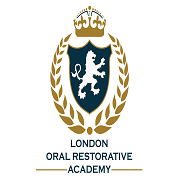
Batool Ali
The Aga Khan University Hospital, Pakistan
Title: Stability of palatal rugae as a forensic marker in orthodontically treated cases
Biography
Biography: Batool Ali
Abstract
The palatal rugae have been used as a reference landmark and identification marker by orthodontists and the forensic analysts, respectively. However, the reliability of palatal rugae as a forensic marker remains questionable once an individual is subjected to orthodontic treatment. This study aims at evaluating the changes in the rugae pattern after non-extraction, extraction and maxillary expansion orthodontic treatment. The lengths and shapes of palatal rugae were evaluated on the pre-treatment and post-treatment dental casts of 168 subjects using Thomas and Kotze classification. Extraction treatment significantly reduced the second and third rugae lengths (p<0.05); whereas, the third rugae length was significantly increased after palatal expansion (p<0.05). The shape of rugae remained consistent in all the study groups which may be used as a reliable forensic marker in subjects undergoing orthodontic treatment. However, the use of the lengths of palatal rugae in forensic odontology must be made with caution.




